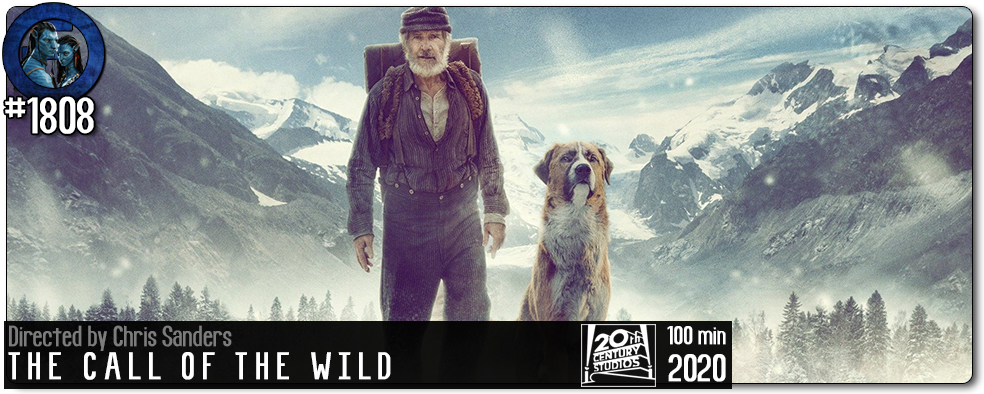Movie Review – Call of The Wild, The (2020)
Principal Cast : Harrison Ford, Omar Sy, Dan Stevens, Karen Gillan, Bradley Whitford, Colin Woodell, Cara Gee, Scot MacDonald, Terry Notary.
Synopsis: A sled dog struggles for survival in the wilds of the Yukon.
********
Jack London’s classic novel is plundered once more for Hollywood content demands, with Chris Sanders’ evocative but middling CG effort offering scant emotional investment early before trying to pay it off at the end with vexatious exasperation; despite the inclusion of a grizzled Harrison Ford in full growly-bear voice, the film’s beautiful cinematography (mostly shot on a green screen, if the production images online are anything to go by) and a reeeeeasonably good computer generated dog as the star provide this well-serviced story with at least some lovely visuals to watch even if the heart of the story remains elusively untapped.
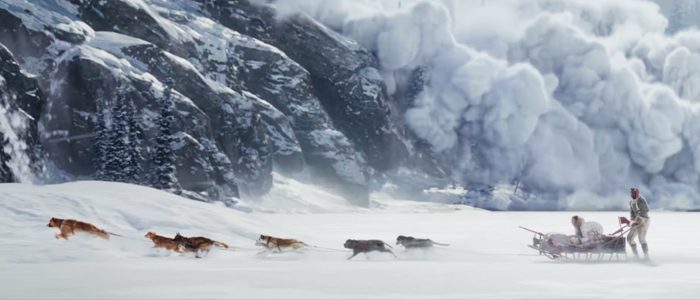
Set in the 1800’s of the Yukon, The Call of The Wild tells the story of Buck (a CG dog performed by Lord Of The Rings and Planet of The Apes mo-cap specialist Terry Notary), a spoiled Californian St Bernard cross, who is stolen from his luxury life with Judge Miller (Bradley Whitford) by racketeers and transported into the Alaskan wilderness to work as a sled dog on the inhospitable postal run, for the impressionable Perrault (Omar Sy) and his assistant Francoise (Cara Gee). Eventually, Buck comes to buddy-up with the Yukon’s resident grief-wallow, John Thornton (Harrison Ford), who takes him on a journey across the wilderness in search of a legendary golden treasure, only to be pursued by the cruel and vindictive Hal (Dan Stevens), who blames Buck for his own search party’s gross misfortune.
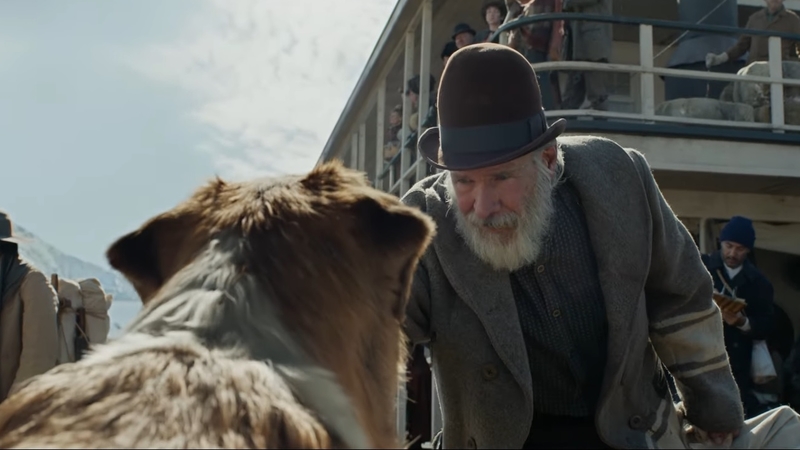
If you Wiki the title The Call Of The Wild, you’ll see that London’s story has been told, told again, and retold even more than that, since its first screen depiction in 1923’s silent film version. The most famous Golden Age version has been Clark Gable’s in-name-only 1935 version whereby the Buck storyline took a back seat to the human narrative, whilst in the years since it’s been adapted a variety of times including twice in the 1970’s, a 2000 television series, and now twice in the post-millennial age. The Call Of The Wild holds remarkable similarities with Jack London’s other dog-themed book, White Fang, from its centrality to canine narrative to the seemingly transient nature of human-animal bonds.
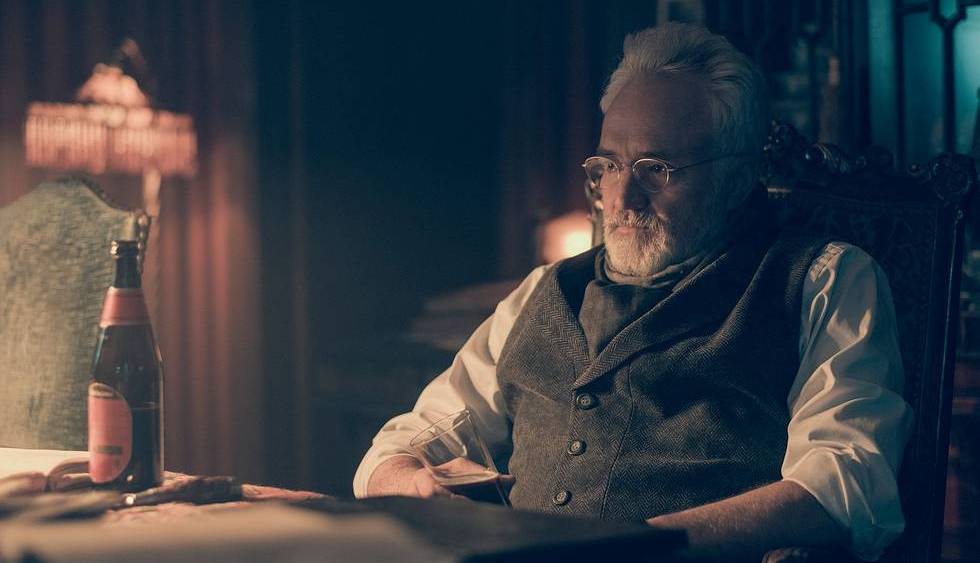
From a screenplay by Michael Green (Logan, Blade Runner 2049), director Chris Sanders (Lilo & Stitch, How To Train Your Dragon) gives an earnest yet weirdly aloof crack at bringing this story to life. He invests a lot of time in building our investment in Buck, the film’s main character upon whom the whole project rests, and despite some uncanny valley issues with Buck’s all-CG creation the final product isn’t entirely without merit. Exactly why Sanders felt the need to go all-CG with Buck and the various other animals in the film (a brown bear, the other dogs in Bucks’ sled team, to name a couple of examples) I can’t explain, but the effect has a distinct artificiality to it that one can’t help but feel removed from the film by. The weird disconnect occurs primarily during the films action sequences, as well as during any moment the dog interacts directly with his human co-stars, and while I suspect kids will overlook such wonky artifice a more discerning adult eye might find the effect annoying to varying degrees.
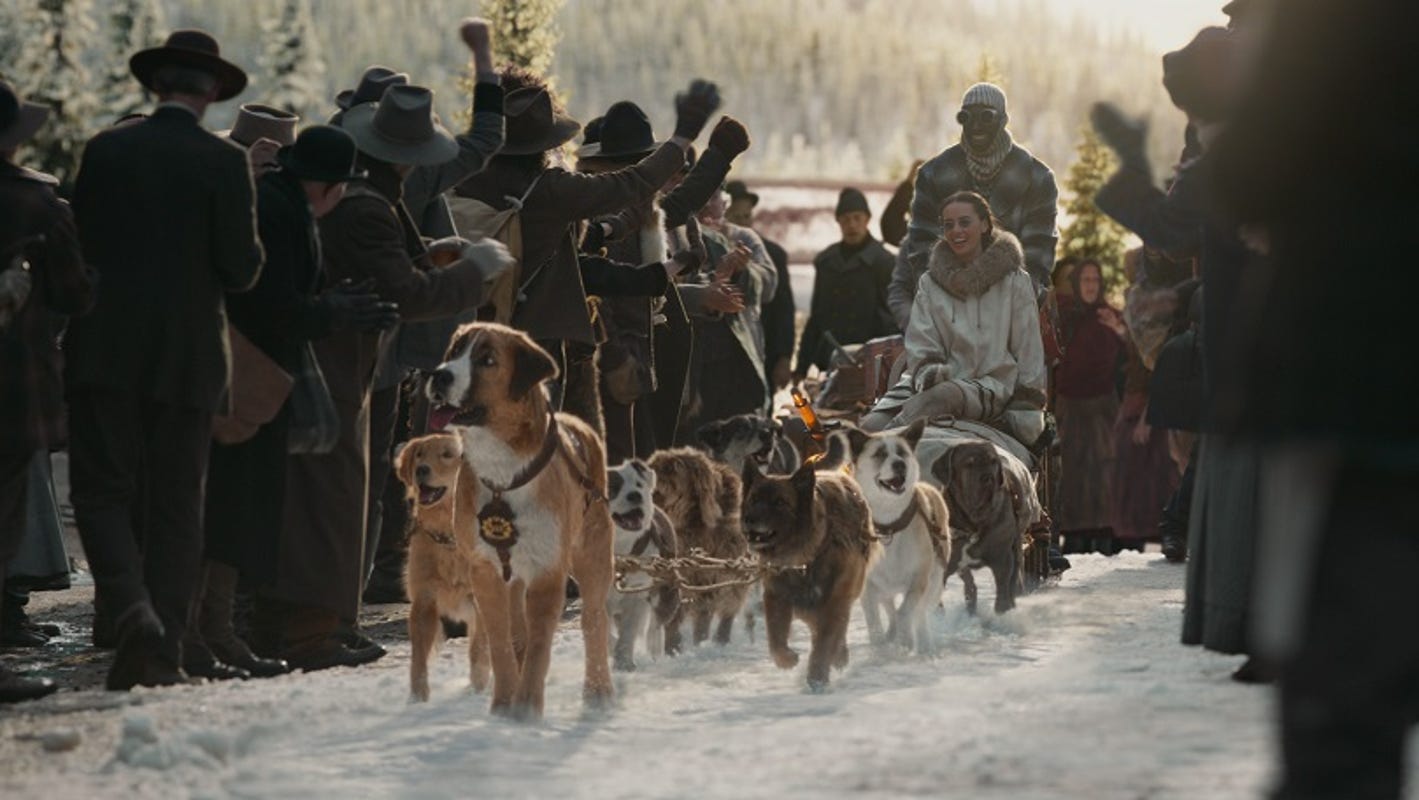
The story and characters themselves offer alternatively satisfying and mystifying arcs. Buck aside, the human characters are afforded a degree of performative nuance that never overshadows the primary canine narrative, feeling like extended cameos instead of legitimate participants – Omar Sy’s postal working sledder is easily the best of the bunch here, aided by Cara Gee’s acerbic assistant role – even to the detriment of Harrison Ford’s worthy role of John Thornton. Ford does a good job as the hard-bitten Thornton, a vaguely Grizzly Adams type naturalist who spurns humans to seclude himself, this sense of isolation mirroring the journey of Buck himself through the unforgiving landscape. The role isn’t a stretch, really, what with Dan Steven’s derivative, snarly-toothed villain role offering the ageing actor a chance to redeem himself as a hero by film’s end. Bit parts to the likes of Karen Gillan, as one of Stevens’ short-lived offsiders, and Bradley Whitford, as Buck’s original owner, are sweet enough but never enhance the story much. No, the showcase role here is a performance captured digital dog; if you believe it, you’ll enjoy the film well enough, but if, like me, you find the visual effects a touch wonky, you’ll spend some time acclimating yourself to the artificiality.
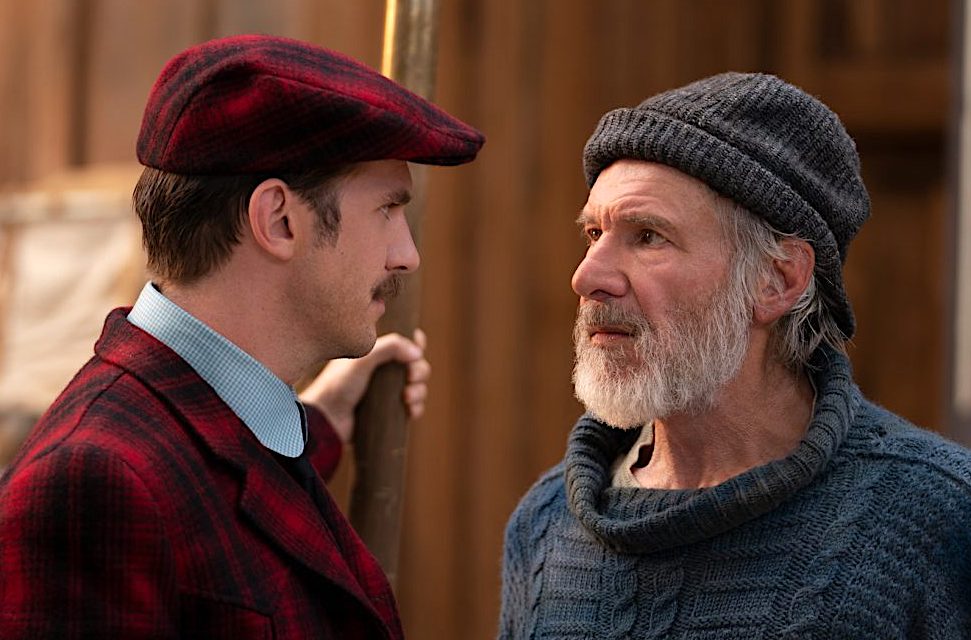
From the warm embrace of Californian heat to the ice-frozen landscapes of the northern Yukon, the film suffers nothing from a glorious canvas upon which hardship and tribulation seem resolute and inexorably intertwined. Lensed by venerated Spielberg associate Janusz Kaminski, The Call Of The Wild makes the most of its wonderful vistas and scenery, even if it was probably shot on a soundstage with green screen backdrop replacement. Whereas the seams on Buck are quite prevalent, the visual effects used to bring the Yukon landscape to life is really rather exquisite, and the film’s soft glow of adoration for both the material and setting is inherent in every frame. The Call Of The Wild is a well mounted and well filmed movie, if only the story was given a stronger sense of purpose. The addition of Harrison Ford’s narration is puzzling for its overuse, I guess intended as an “in” for younger audiences, and the film crosses a line late in the game when, after his character is slain in the most tragic of circumstances, Ford continues to overbearingly commentate the film as if some omniscient being! John Powell’s score is also a key feature, his soaring adventure themes and soft, tragic tones flexing emotional muscle on a story that’s resolutely thin with them overtly.
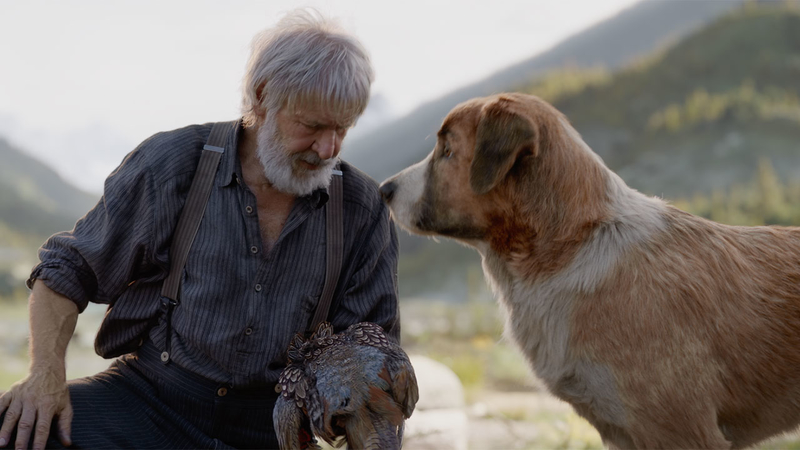
The Call Of The Wild is a nice enough adventure film that will enthral and entertain in the moment. It’s a slow build, though; the opening act takes its sweet time getting to any real meaty story, before the final half satisfies our intellectual thirst for more gung-ho antics, so be prepared. Harrison Ford is at his most Harrison Fordy, the digital work on Buck ranges from good-to-great-to-WTF, and Sanders obviously has an affection for the material enough to make things work without too much effort. It’s a lovely retelling of the story, despite some fumbles along the way, and will reward those seeking a more bucolic home viewing experience than the glut of content around it will provide.


